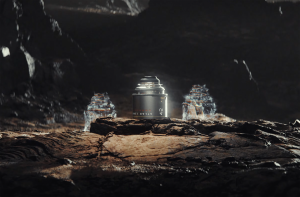Storyboards serve as the outline for films, animation, and video games, but there is no right way to make them. Here’s what you need to know.
There are many standard practices in the film industry that have gradually been adopted by other visual media, such as TV, animation, and games. Storyboarding is one such practice used across all visual media, as it helps creative leads understand the project’s vision. While storyboards are used in film as well as video game development, for things such as cutscenes, there is no right or wrong way to create a storyboard.
Some creatives choose to storyboard every scene with as much detail as possible, while others either use them sparingly or not at all. Christopher Nolan, for example, recently revealed in an interview with Wired that he only uses storyboards for select sequences, choosing to direct the majority of his movies without storyboards. Conversely, animation directors need storyboards to approve the final animation — storyboarding has given many animation directors their start in the business.
What Is a Storyboard?
A storyboard is a visual aid in the form of a document, often a poster board, that’s meant to help creatives understand how a particular shot or scene will look. Essentially, the storyboard is the outline for a scene.
At its most basic, a storyboard can look like rough black-and-white sketches done in the format of a comic book. Each panel represents a different shot, and each shot breaks down the action and the type of shot that will be used (i.e., wide, medium, or tight).
While storyboards can be simple, they can also be much more detailed and complex. Instead of stick-figure sketches, panels may contain much more detailed drawings and colors. They may also include everything from set diagrams to high-end concept art that brings characters to life through examples of their costumes and props.
One of the grandest examples of high-concept storyboarding can be seen in Alejandro Jodorowsky‘s Dune book, which include extensive storyboards, concept art, and other materials used to pitch the film to studio executives. While Jodorowsky’s Dune film was ultimately never made and the remaining 20 or so books are impossible to get, glimpses of the book do exist.
How to Use Storyboards
Storyboards are typically created by the cinematographer or storyboard artist, often in conjunction. Once the storyboards are created, it’s up to the film’s visionary, the cinematographer, to present them to the team. The film’s cinematographer explains the particularities of the shot to a greater extent, using the storyboard simply as a jumping-off point.
In Animation
Storyboards and storyboard artists are more important in the production of animated films, as the storyboards serve as a rough draft of how the final animation will look. In animation, storyboard artists are essentially directors. They mold the final vision of the project and often work closely with the director and other creative leads. Storyboarding offers a path to eventually becoming a director of an animation project, which is why you’ll see many animation directors with storyboard artist credits early in their careers.
That being said, some directors are so hands-on and passionate about their projects that they refuse to delegate. Animation directors like Hayao Miyazaki (Spirited Away) and Hideaki Anno (Neon Genesis: Evangelion) prefer to make storyboards for their projects, giving them full control of the creative process.
In Video Games
Video games are an interactive medium, so storyboarding isn’t necessary for the entirety of the game, but they are useful for planning cutscenes. If you’re not familiar with video games, cutscenes are short video sequences used as narrative devices. Since many cutscenes are pre-rendered footage made by animation teams, storyboarding in video games can be very similar to animation.
However, for cutscenes rendered in-game, storyboards are there to inform members of various departments. That’s because an in-game cutscene can require characters to have certain animations or interact with the environment in specific ways. In-game cutscenes can require the input of rigging artists, lighting artists, scene artists, audio engineers, writers, and voice actors. In this case, video game storyboards may resemble film storyboards because of the amount of people and departments involved.
What Does a Good Storyboard Look Like?
Storyboards are art, so there’s no right way or wrong way to do it. Typically, though, a storyboard is comprised of panels, like a comic book, and each panel describes a shot in the scene. Some panels may even have lines underneath that further explain what’s going on in the shot or what it may require. As mentioned above, storyboards can look simple and use stick figures, or they can be extremely detailed.
There are plenty of resources out there to get a good idea of what good storyboards look like. You can try looking in the special features section of Blu-Rays or DVDs. In some video games, storyboards may be found after completing the game, or they may be unlocked throughout the game. Storyboards can also be found in the art books of projects. Blade Runner 2049: The Storyboard is a great example of this. If you prefer animated storyboards, the Spider-Man Across the Spider-Verse: The Art of the Movie book includes storyboards in addition to concept art and commentary from the filmmakers.
Start Making Your Own Storyboards
Storyboarding can be a great way to get your foot in the door as an animator or illustrator. You get to work with lead creatives to craft the visual language of the project. Being proficient at creating storyboards shows that you have vision, which may open the door for you to lead your own project one day. If you have the illustrating skills to create storyboards and you wish to break into film, animation, or video games, give it a shot.
Download these free resources to get started:
Cover image via Freepik.
Looking for filmmaking tips and tricks? Check out our YouTube channel for tutorials like this . . .




